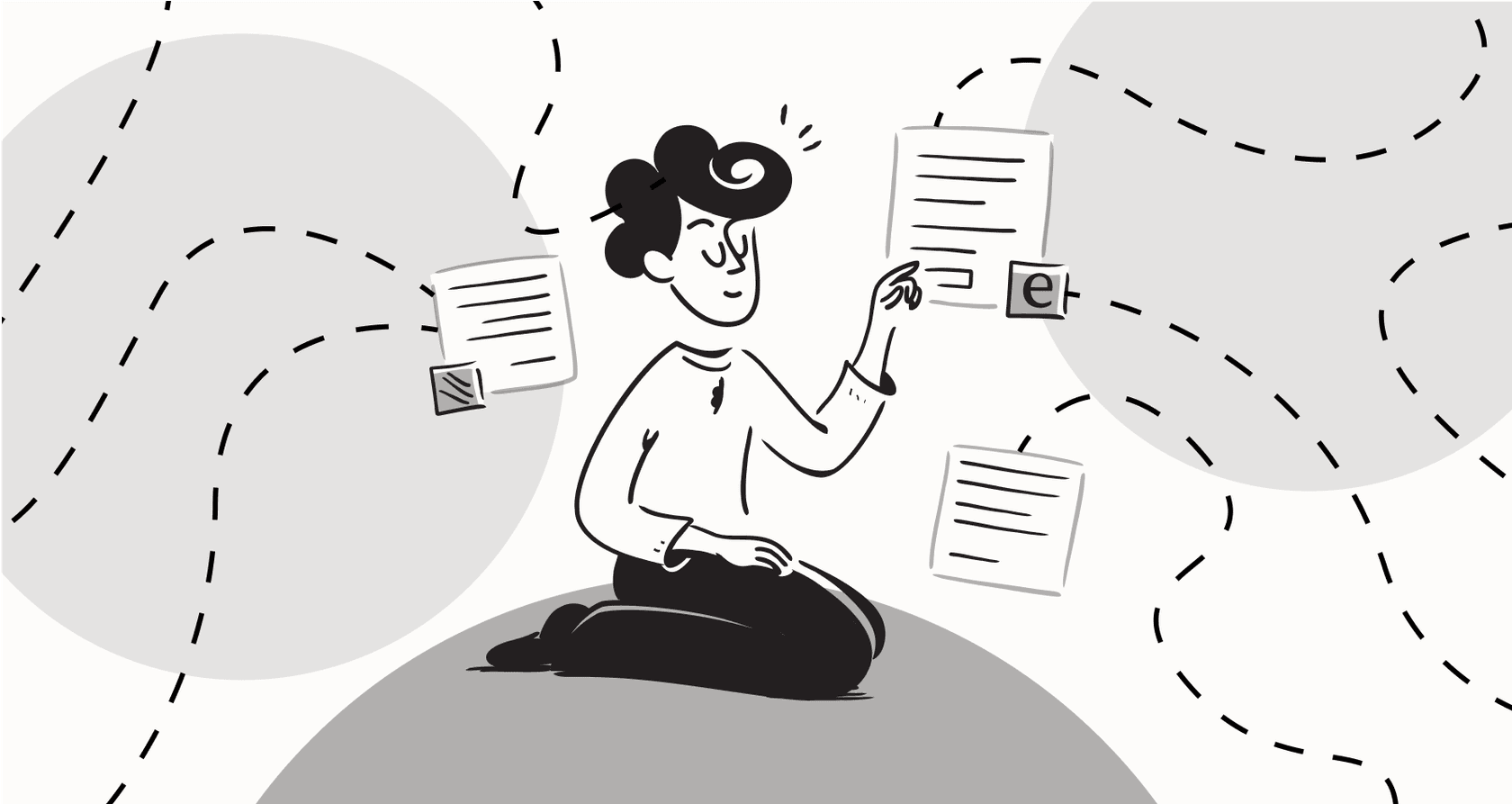
With global stock markets buzzing about tech, AI has been dominating for quite a while now. But beyond the headlines, it’s already reshaping how businesses operate, especially in customer service. According to Zendesk, 80% of employees say AI has already improved the quality of their work, while over 60% of agents believe they could perform their jobs better with more data to personalize interactions.
For Zendesk users, integrating GPT-powered AI can improve efficiency, reduce response times, and help agents provide more personalized support. Whether it’s automating ticket resolution, assisting with smart reply suggestions, or enabling 24/7 customer assistance, AI can make support workflows smoother. This guide walks you through the best GPT integration options for Zendesk, the setup process, and key strategies to get the most out of AI-powered support.
Adding GPT to Zendesk: Available options
When it comes to integrating AI into Zendesk, you have two main contenders: Zendesk’s native AI or the third-party GPT solution, eesel AI. Each option offers unique advantages, depending on your needs for customization, integration, and cost.

Easily integrate eesel AI by searching it through Zendesk's marketplace.
Option 1: Zendesk native AI
Zendesk’s built-in AI is designed to work seamlessly within its ecosystem, offering features like automated ticket resolution, reply suggestions, and intent-based routing. However, it comes with certain limitations. It operates on a per-resolution pricing model, which can drive up costs as ticket volumes grow. Customization is also limited, as it primarily works with Zendesk data and doesn’t easily adapt to external knowledge sources. Additionally, it lacks deep integrations with other platforms like Google Drive or Confluence, restricting its ability to pull from multiple knowledge bases.

Zendesk's pricing as shown on their website.
Option 2: eesel AI
For businesses needing more control, deeper integrations, and predictable costs, eesel AI offers a strong alternative. Powered by OpenAI, eesel AI delivers a highly flexible AI solution that integrates directly with Zendesk and other platforms.
Unlike Zendesk’s native AI, eesel AI connects with multiple knowledge sources, allowing companies to train it using Zendesk tickets, help center articles, Google Drive, Confluence, Slack, and more. With broader data access, it provides more accurate, context-aware responses tailored to customer inquiries.

eesel AI is one of the capable GPT-powered integration within Zendesk.
eesel AI also offers greater customization, letting users create multiple AI agents with different tones and response styles. The AI continuously learns from past tickets, automates responses, assists agents with smart reply suggestions, and even tags tickets automatically to streamline workflows.
Plus, with a transparent per-interaction pricing model, eesel AI makes it easy to scale AI adoption without the unpredictability of per-resolution charges.
Zendesk native AI vs GPT solutions
When evaluating Zendesk AI integration options, you’ll need to choose between Zendesk’s built-in capabilities and third-party GPT solutions. According to Zendesk’s latest pricing update, each approach offers distinct advantages:
| Feature | Zendesk Native AI | Third-Party GPT Solutions (e.g., eesel AI) |
|---|---|---|
| Setup Time | 2-4 weeks per documentation | 1-2 weeks typical implementation |
| Pricing Model | Per-resolution charges | Transparent per-interaction pricing |
| Customization | Limited preset options | Extensive workflow customization |
| Integration Depth | Native platform integration | Flexible API-based integration |
| Training Options | Limited to Zendesk data | Multiple data source support |
Planning your AI integration
You can’t just rush into AI solutions thinking they’ll be effective and work as soon as you plug them in, they require a well thought out plan. Successful setup requires careful consideration across several critical areas:
Technical foundation
Before beginning implementation, verify your technical readiness by reviewing your Zendesk subscription tier’s AI support capabilities and compute requirements. Document existing API access levels and rate limits to prevent integration bottlenecks. Additionally, map any existing integration dependencies that could impact your AI workflows.
Team preparation
Successful AI adoption depends heavily on your team’s readiness. Identify key stakeholders who will manage the integration and establish clear communication channels for feedback. Plan comprehensive training sessions for support agents to ensure they can effectively leverage the new AI capabilities.
Data strategy
Quality training data is essential for AI performance. Conduct a thorough audit of your knowledge bases and support documentation. Review past ticket data to identify patterns and gaps in your documentation that need addressing before the rollout phase.
Budget planning
Develop a comprehensive budget that accounts for both immediate and long-term costs. Compare pricing models between solutions, factoring in scalability needs and potential ROI based on your ticket volume and resolution times. For example, eesel AI offers predictable per-interaction pricing without hidden fees, making it easier to forecast costs as your support volume grows. If you happen to run out, it’s as simple as contacting eesel AI for more, no automatic overage fees will ever be applied.
Pro Tip: When evaluating solutions, consider not just the initial setup costs, but also factors like scalability potential, customization requirements, and ongoing maintenance needs. This holistic approach will help you choose a solution that grows with your business.
Implementing GPT in Zendesk
Adding GPT capabilities in your Zendesk environment requires careful planning and the right approach. Below, we break down the most common integration methods and how to approach each one effectively.
Zendesk GPT Integration Methods
There are three primary ways to integrate GPT with Zendesk, each with different levels of complexity and flexibility according to Zendesk’s official integration guide:
| Integration Method | Setup Complexity | Implementation Time | Technical Requirements |
|---|---|---|---|
| Native Zendesk AI | Medium | 2-4 weeks* | Zendesk Enterprise plan |
| Third-party solutions | Low | 1-2 weeks* | Basic admin access |
| Custom API development | High | 4-8 weeks* | Development team |
*Implementation time may vary depending on several factors such as the method, complexity, and other requirements.
Best practices
The setting up process involves several key phases, regardless of your chosen method. Modern solutions like eesel AI streamline this process significantly while maintaining enterprise-grade security and customization options.
1. Setup phase
The initial setup phase focuses on establishing your foundation. This includes creating your account, connecting to Zendesk (typically under 10 minutes), and configuring essential settings like language preferences and response templates. Security configuration follows, with authentication setup and API access configuration based on your requirements.

Zendesk integrated within eesel AI's dashboard.
2. Data connection and training
Next comes the data connection and training phase. Connect your knowledge sources including help center articles, internal documentation, and historical ticket data. This allows the AI to learn your company’s unique communication style and domain expertise. Modern AI platforms can analyze this data to create sophisticated response patterns that match your brand voice.
3. Testing and validation
The testing and validation phase requires thorough attention to detail. Begin by running simulated conversations across different scenarios to verify response accuracy and appropriateness. This helps identify potential gaps in knowledge or areas where responses need refinement.
4. Team onboarding
Finally, focus on thoughtful team onboarding. Create clear guidelines for AI usage, establish monitoring processes, and provide comprehensive training for support agents. Starting with a pilot program using specific ticket types allows for controlled testing and refinement before full deployment.
Pro tip: Monitor your AI’s performance metrics closely during the initial weeks. This data helps optimize response accuracy and identify areas needing additional training or customization.
Measuring Zendesk GPT integration success
Using AI in customer service requires careful measurement to ensure you’re getting real value from your investment. According to the Zendesk Customer Experience Trends Report 2023, companies are increasingly focused on measuring tangible ROI from their AI applications. Let’s explore how to effectively measure and optimize your Zendesk GPT integration.
A comprehensive measurement strategy combines quantitative metrics with qualitative feedback to give you a complete picture of your AI tool’s impact. While numbers are important, customer satisfaction and agent experience provide context for evaluating success.
Key performance metrics
To effectively track your Zendesk GPT integration’s performance, focus on these core metrics:
| Metric Category | What to Measure | Target Range | Why It Matters |
|---|---|---|---|
| Efficiency | Resolution time, First response time | 30-50% improvement | Faster responses directly impact customer satisfaction and agent productivity |
| Quality | CSAT, Resolution rate | 85%+ satisfaction | Higher satisfaction scores indicate effective AI responses |
| Volume | Ticket deflection, Automation rate | 20-40% automation | Shows how effectively AI handles routine queries |
| Cost | Cost per ticket, Agent productivity | 25-40% savings | Demonstrates direct ROI from AI implementation |
Effective measurement starts with establishing clear baselines before launch. Tools like eesel AI provide built-in analytics that automatically track these metrics and calculate improvements, making ROI measurement straightforward.
The measurement process should be ongoing and systematic. Begin by documenting current performance across all key metrics for at least two weeks. Use this baseline to set realistic improvement targets. Monitor real-time performance through analytics dashboards to identify optimization opportunities. Regular ROI calculations should consider both direct cost savings and indirect benefits like improved agent satisfaction. Complement quantitative data with regular surveys of customers and agents to understand the real-world impact.
Optimizing AI response quality
Consistent monitoring and refinement are essential for maintaining high-quality AI responses. Platforms like eesel AI offer sophisticated tools for training and customizing your AI to ensure it maintains your brand voice while providing accurate, helpful responses.
Response customization best practices:
| Focus Area | Implementation Steps | Expected Outcome |
|---|---|---|
| Brand Voice | Define tone guidelines, Upload voice examples | Consistent brand messaging |
| Knowledge Base | Connect documentation, Train on past tickets | Accurate, context-aware responses |
| Quality Control | Regular response audits, Agent feedback loops | Continuous improvement |

Align your bots tone using eesel's customization panel.
Security and compliance
Securing your Zendesk GPT integration is important for maintaining customer trust and compliance. According to Zendesk, 83% of customer service leaders say that cybersecurity is one of the top priorities in their customer service strategies.
Implement these essential security measures:
| Security Requirement | Implementation Approach | Compliance Impact |
|---|---|---|
| Data Encryption | End-to-end encryption for all communications, At-rest encryption for stored data | Meets GDPR, CCPA requirements |
| Access Control | Role-based permissions, Multi-factor authentication, Session management | Ensures data access accountability |
| Audit Trails | Comprehensive logging, Regular security reviews, Incident response procedures | Supports SOC 2 compliance |
eesel AI provides enterprise-grade security features and maintains compliance with major data protection regulations, ensuring your customer data remains protected while leveraging AI capabilities.
Take your Zendesk AI setup from good to great
AI is here to stay, but making it work for your business is about choosing the right tool. Whether you need better automation, smarter responses, or seamless integrations, adding GPT to Zendesk can take your support team to the next level.
If you’re looking for an affordable, flexible alternative to Zendesk’s native AI, eesel AI can help. Powered by OpenAI, eesel AI gives you the ability to customize, train, and scale your AI-powered support without unpredictable costs.
Transform your support operations today: Start your free trial of eesel AI and see results within two weeks.
Share this post

Article by
Iohan Chan
Iohan is eesel AI's resident writer - an energetic, fun-loving dude who loves all things tech. With experience in the SEO and blog world and a penchant for technology, he's combined his passion and work history into some great writing!







